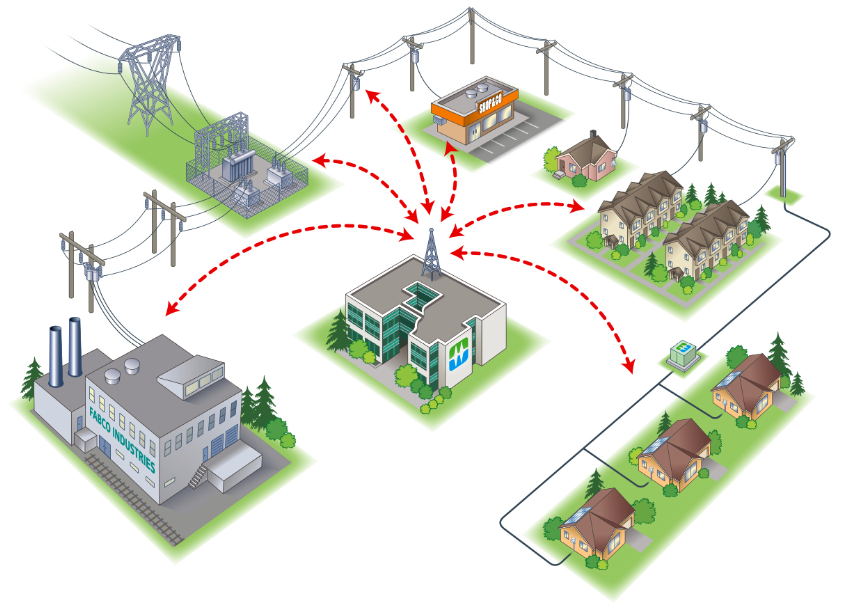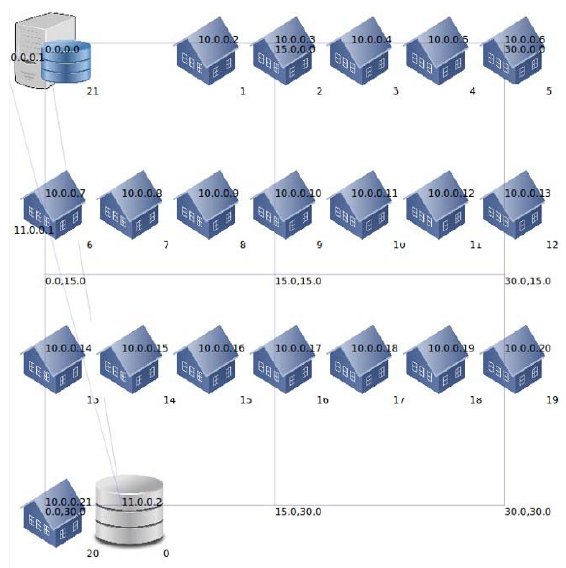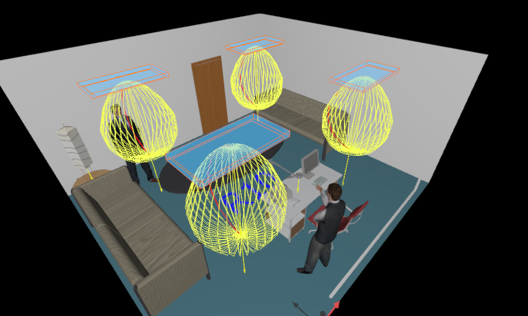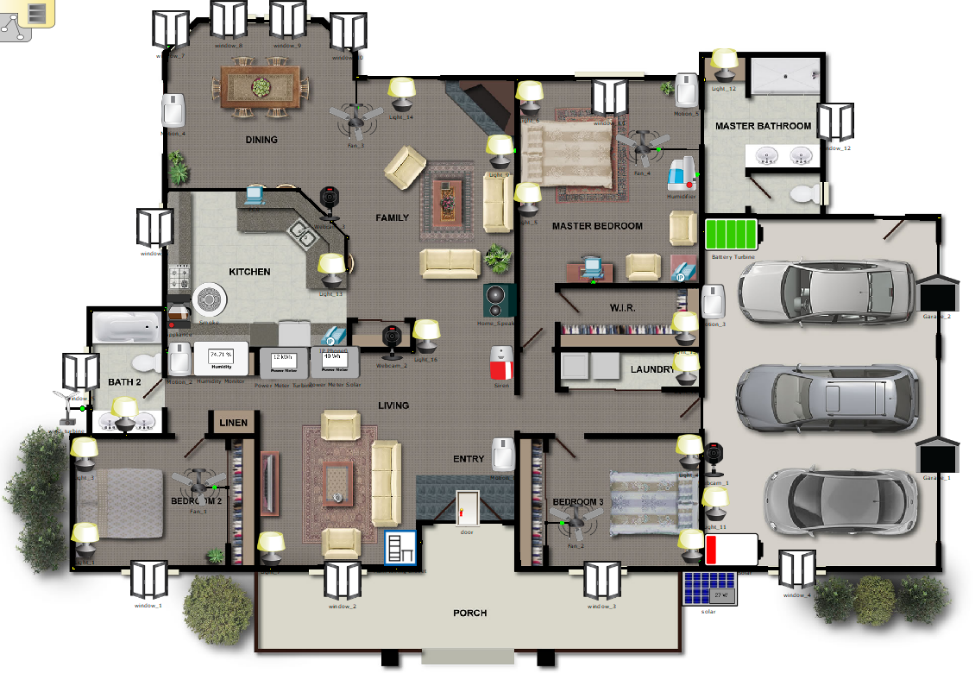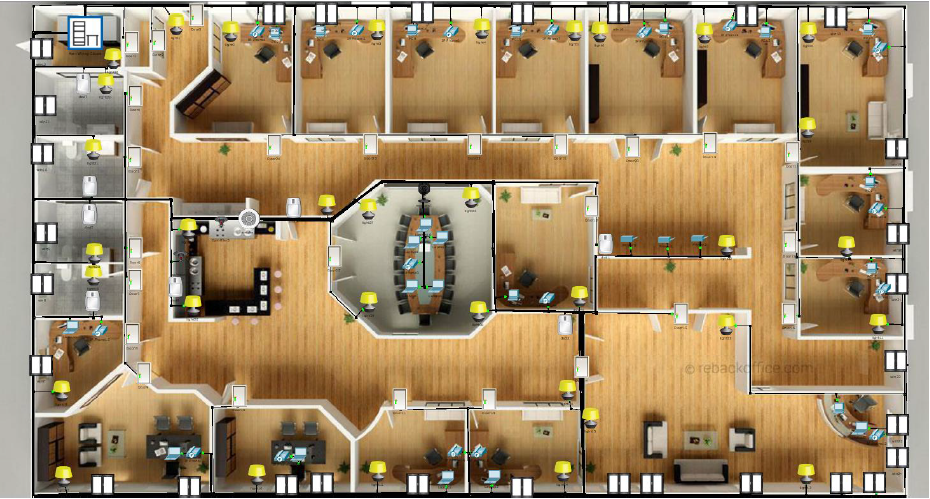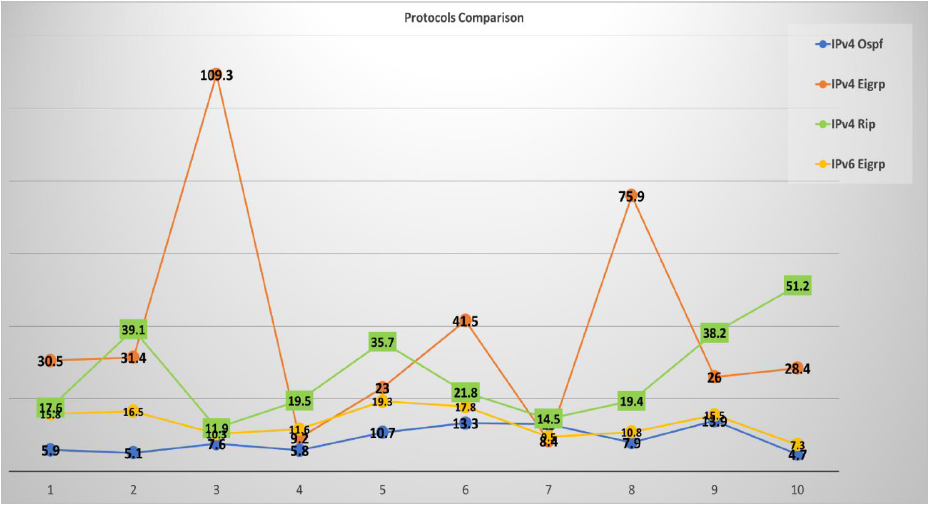Project Description
Smart Energy Grid
Smart Energy Grid is considered to be an advanced bidirectional power flow system with the abilities of continuous monitoring, adapting, self-healing and forecasting according to energy needs of the consumers regardless of size. For Smart Energy Grid the key technologies for implementation are:
- Smart Metering
- Smart Sensing
- Advanced Metering Infrastructure (AMI)
- Intelligent Electronic Devices (IED)
- Phasor Measurement Units (PMU)
- Wide Area Measurement Systems (WAMS)
- Vehicle-to-Grid (V2G)
- Grid-to-Vehicle (G2V)
- Distributed Energy Resources (DER)
In order to apply these key technologies, a strong communication infrastructure, both wireless and wired, is of crucial importance. Since power flow is bidirectional, communication must also be bidirectional, thus allowing providers and customers to exchange data to create energy profiles and inevitably enhance the ability of forecasting.
Smart Energy Grid Conceptual Model
Since Smart Energy Grid is all about merging energy flow along with communication flow in a bidirectional manner, the architecture uses characteristics from the OSI model and the energy model.
Smart Energy Grid Architectural Model
Our research is focused on the Communication and the Information Layer. Specifically, we study communication systems both wireless and wired in a heterogeneous manner in order to interconnect domains and zones located on the component layer towards 5G era. Furthermore, we investigate algorithms focused on energy matters, such as VAR Compensation and Optimization, islanding mode and re-routing of energy through different paths of the network. We also deal with routing protocols that can be addressed to each of the communication system in order to be efficient and adaptive towards the communication needs of the grid. Another important aspect of the Smart Energy Grid that we investigate is Vehicles both Electric and Plug-in Hybrid Electric Vehicles (PHEV) and how a communication system can help their insertion to the grid in order to be used as energy suppliers when it is needed (V2G) and also how the grid can offer charging through DER focusing in RES (G2V).
Another aspect of our research is the simulation and emulation regarding Smart Energy Grid. Specifically, we employ cooperative techniques that allows to perform Federated Simulations, both at Energy and Communication Layers. Our ability is to simulate up to the Distribution Domain by designing multiple HAN’s from Consumers side interconnected with FAN from the Utility side, thus creating a complete NAN that allows to test communication systems in a heterogeneous manner.
System Model: NAN Architecture
Network Visualization
From our simulation model, we are able to measure throughput and goodput for all nodes and for both the communication systems that we have designed on our Federated Framework Model.
Furthermore, we design and simulate short range communication systems for indoor coverage and specifically we focus on Li-Fi Communication models, where we have developed and simulated a wireless communication system based on visible light for a hospital. We designed and simulated the communication model on Matlab.
Color Visualization on Dialux Evo
Photometric Simulation of Illuminance on Dialux Evo
Total received power for six luminaires in dBm
Another aspect that we have encompassed on our research is to study communication protocols that can be applied in Smart Energy Grid. Especially, with the development of Smart Cities it is expected an enormous demand on IP addressing for all components of the grid. On this part of our research, the main focus is on studying and experimenting with tunneling techniques regarding IPv4 and IPv6, along with other routing techniques such as etherchannel on NAN and WAN architectures on Smart Energy Grid.
Large Scale Network on Smart Energy Grid
Each Smart Home Contains numerous of loads. From our simulation test runs, we are able to compare different protocols regarding network congestivity on packet sending.
Smart Home Loads Simulation
Protocols Comparison
–
–
Future R&D Directions
-
- Design of Heterogeneous Communications focused on Wireless Systems for Energy Systems Interconnections
- Wireless Communication Systems for V2G and G2V applications
- Visible Light Communications and Light Fidelity (Li-Fi) Systems for Indoor coverage for wireless control systems focused on Houses and Buildings
- Smart Algorithms for Energy Control based on the Heterogeneity of the communication system
- Study and development of novel architectures for Smart Energy Grid that are focused mainly on novel RES systems such as tidal, wave and wind for islanding environments
- Study and development of low range indoor communications systems such as Bluetooth Mesh Lighting Control and its interconnections with Wi-Fi and ZigBee
- Enhance the Federated Simulation Model by means of more domains regarding the Component Layer along with the Communication and Information Layer
- Nikolaos Angelis, N. Archontos, D. Vouyioukas, N. Nomikos, C. Skianis, An Integrated NAN Architecture for Smart Energy Grid, ENERGYCON 2018, 5th IEEE International Energy Conference, Jun, 2018, Limassol, Cyprus, IEEE, http://doi.org/10.1109/ENERGYCON.2018.8398753
Research Team
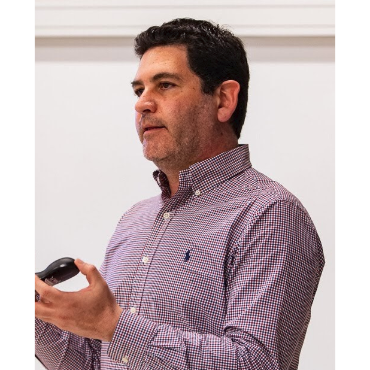
Demosthenes Vouyioukas
DIRECTOR – PROFESSOR
Mobile and Satellite Communication Systems
Dr Demosthenes Vouyioukas received the five-year Diploma in Electrical and Computer Engineering from the National Technical University of Athens (NTUA), and the Ph.D. degree in Electrical and Computer Engineering from NTUA, in 1996 and 2003 respectively. He has also received a Joint Engineering-Economics M.Sc. from NTUA. From 1996 to 2003 he has been a scientific researcher, and from 2003 to 2005 he was a senior researcher at the Mobile Radiocommunications Laboratory of NTUA, where he has been engaged to several European and National Projects. From 2005 to 2006, he was with the Hellenic Aerospace Industry at the Department of Satellite Communications. Ηe is currently Professor and Director of the Computer and Communication Systems Laboratory in the Department of Information and Communication Systems Engineering, University of the Aegean, Greece, where he served as an adjunct lecturer (2004-2010), an Assistant Professor (2010-2016) and an Associate Professor (2016-2020). He also serves as a scientific coordinator in several R&D projects.

Nikolaos Angelis
RESEARCH ASSOCIATE
Smart Energy Grid
–
–
Nikolaos Angelis received his BSc from the department of Electrical and Electronic Engineering Educators, School of Pedagogical and Technological Engineering Athens. He holds MSc Degrees in Design of Integrated Circuits from the Department of Informatics and Telecommunications of the National and Kapodistrian University of Athens and Communications and Computer Networks from the Department of Information and Communication Systems Engineering of the University of the Aegean respectively. Currently he is a PhD Candidate at the Computer and Communication Systems Laboratory of Department of Information and Communication Systems Engineering of the University of the Aegean.
His research interests focus around the area of Smart Energy Grid and especially in communication systems and networks towards integrating energy systems. He has worked as an electrical engineer on KNX System for building automation until 2009. From 2009 until present he works as a Vocational Instructor at Vocational Education and Training of the Ministry of Education and Religious Affairs. He has designed and implemented educational programs under Leonardo da Vinci European Lifelong Learning Program (LLP) and Erasmus+ European program.


